
Hello friends. We continued exploring the unexplored areas of Galicia, meaning the most remote and hidden corners. And as I promised, I wanted to talk about my visit to the Death Coast. Actually, Death Coast doesn’t refer to just this specific beach, the entire coastal area is called that. Its original name is Costa da Morte. The reason for this is that in the past 300 years, which is roughly the period for which we have records, more than 1000 ships have sunk here.
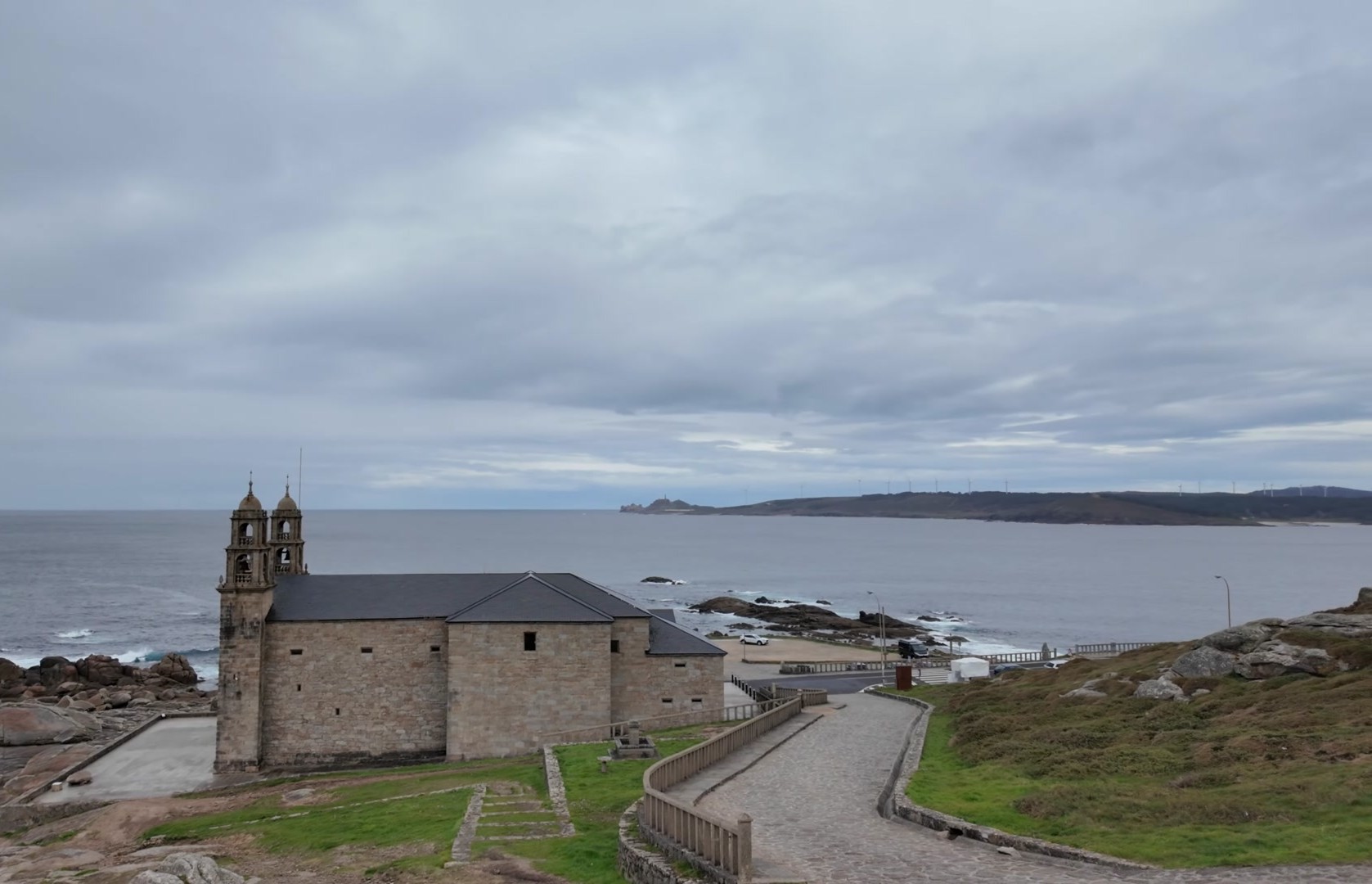

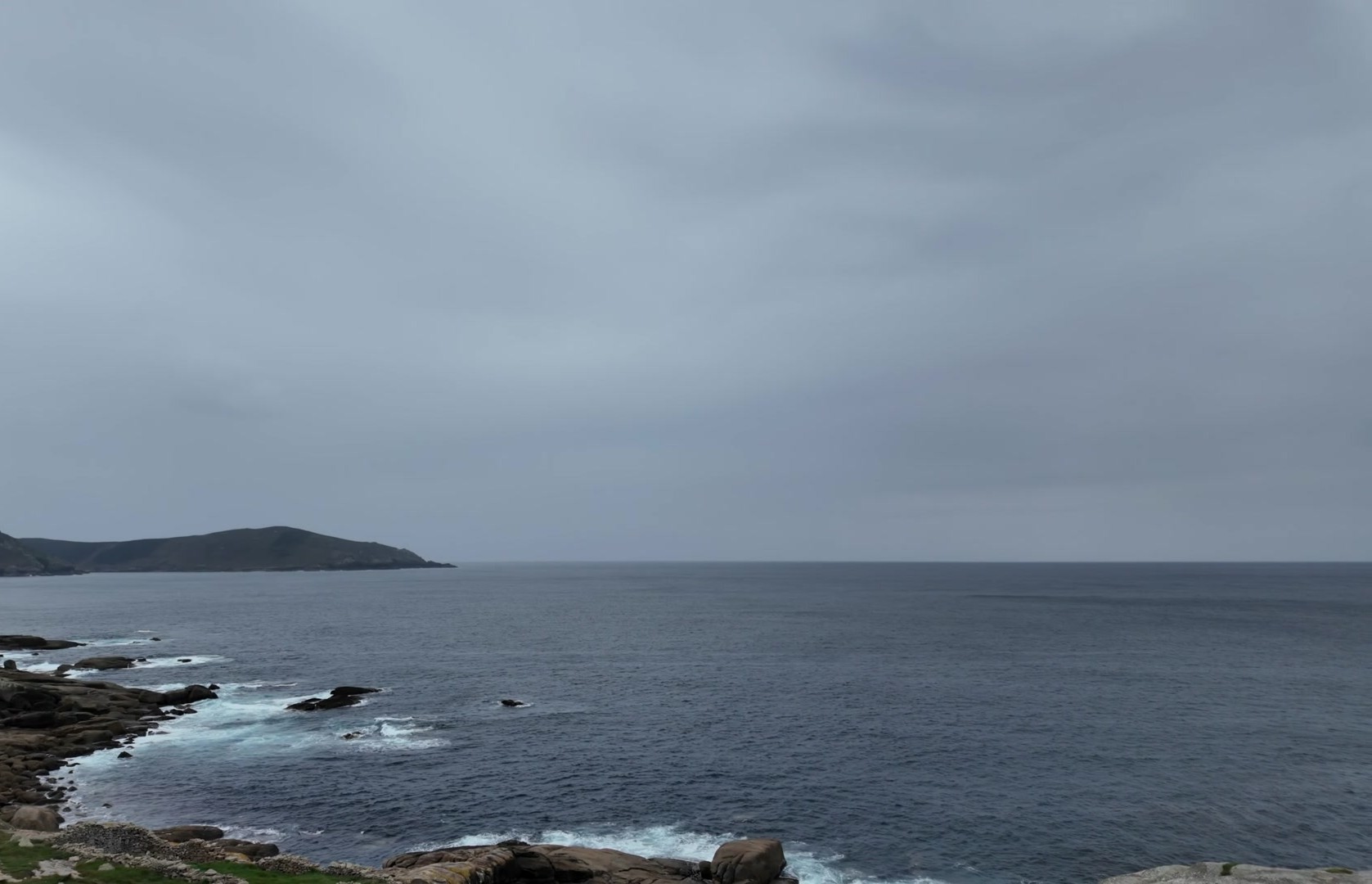
There are a few reasons for this. The Atlantic Ocean is quite harsh in this area and there are many underwater rocks. In the past this route was used to transport gold and later oil. These ships crashed into the rocks and sank. Because of that, several environmental disasters have occurred here. In this series of posts, I won’t talk about La Coruña or Santiago de Compostela because I’ve already mentioned them before. Instead, we visited untouched villages and towns.
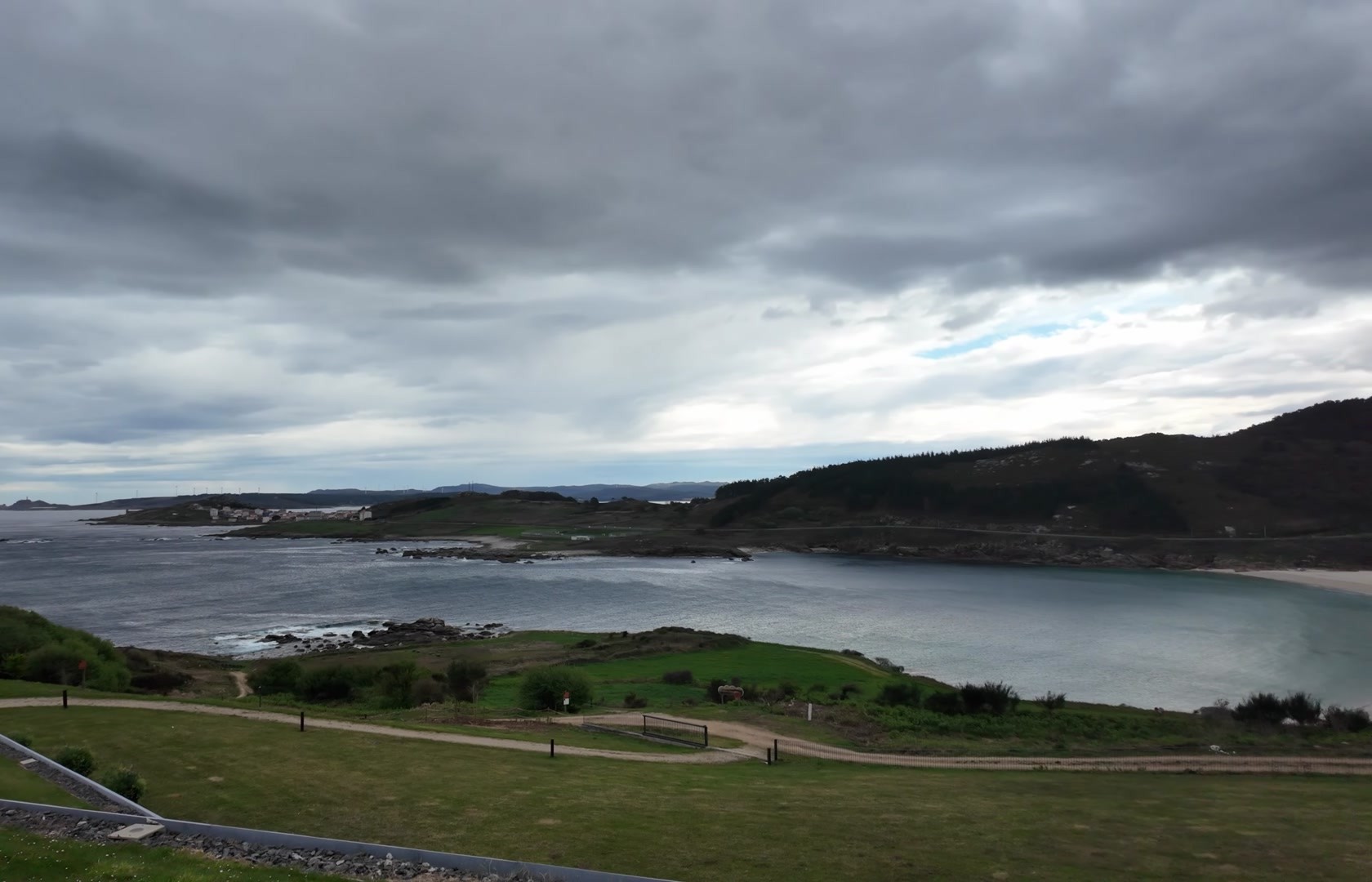
We started the trip in a place called Muxía. Actually, the village across the bay is named Muxía. But the whole area is commonly referred to by that name. We stayed at a hotel called Parador. Parador is a well-known hotel chain in Spain that operates in historic buildings like monasteries. We had also stayed at one in Cuenca.

However, the Parador here is different. It’s a new structure, not a restored historical building. It features modern architecture and is beautifully integrated into the hillside. Even the elevators are slanted. The common areas are stylishly designed. Contemporary artworks and modern photography stand out.






The room is okay, but there are a few small shortcomings for a four-star hotel. For example, the wardrobes are open shelves, which I’m not used to. But the bathroom is quite nice. It's designed as a part of the bedroom and separated with slats painted in various shades of green. It's harmoniously designed to fit nature. There’s a freestanding bathtub, cylindrical sinks and dark metal faucets. The toilet and shower are hidden behind separate glass enclosures.


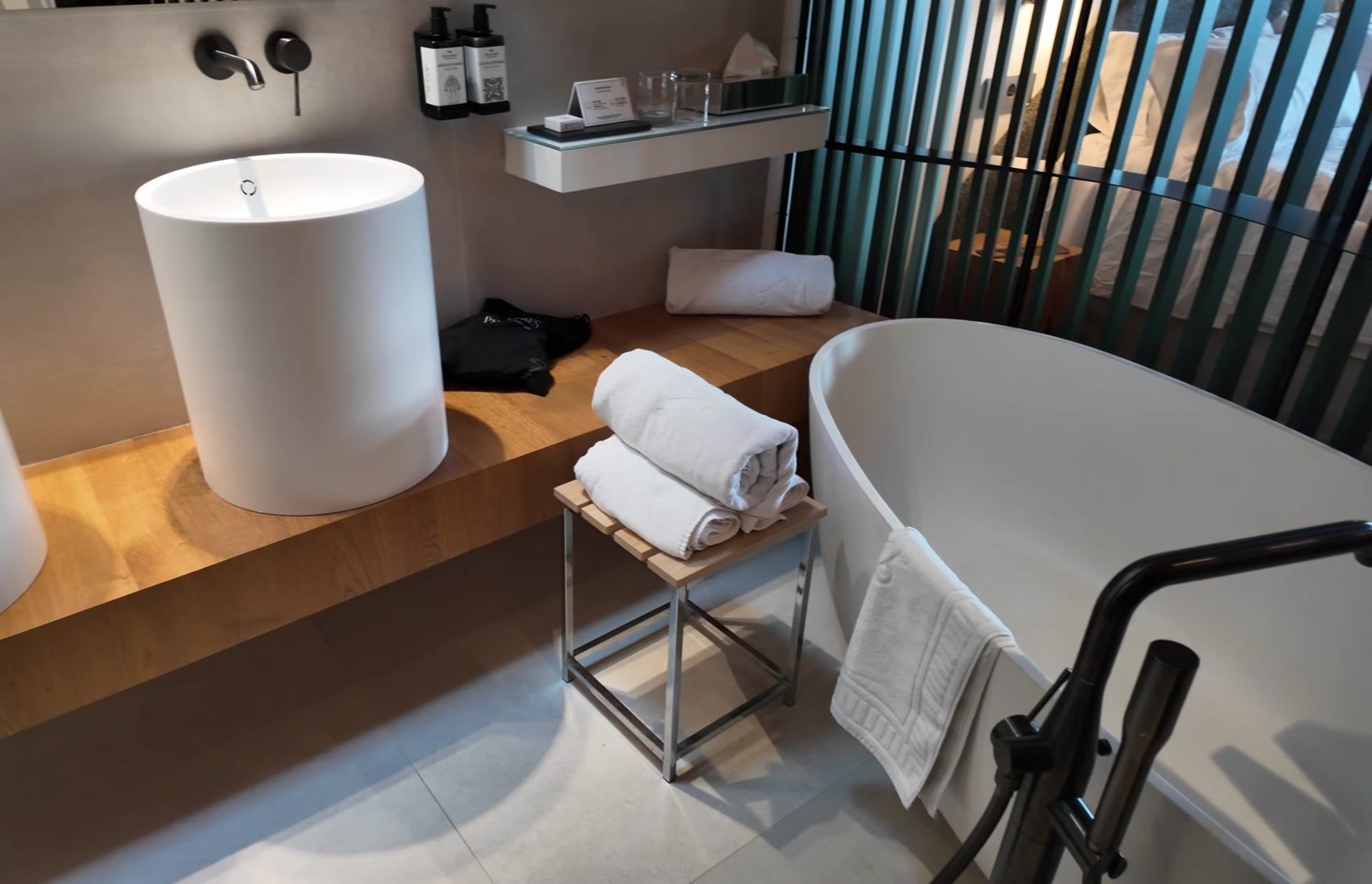

The restaurant service is also decent. I can easily say this is the best place to stay in this area. The hotel was built so that even selective travelers could reach such an isolated spot.
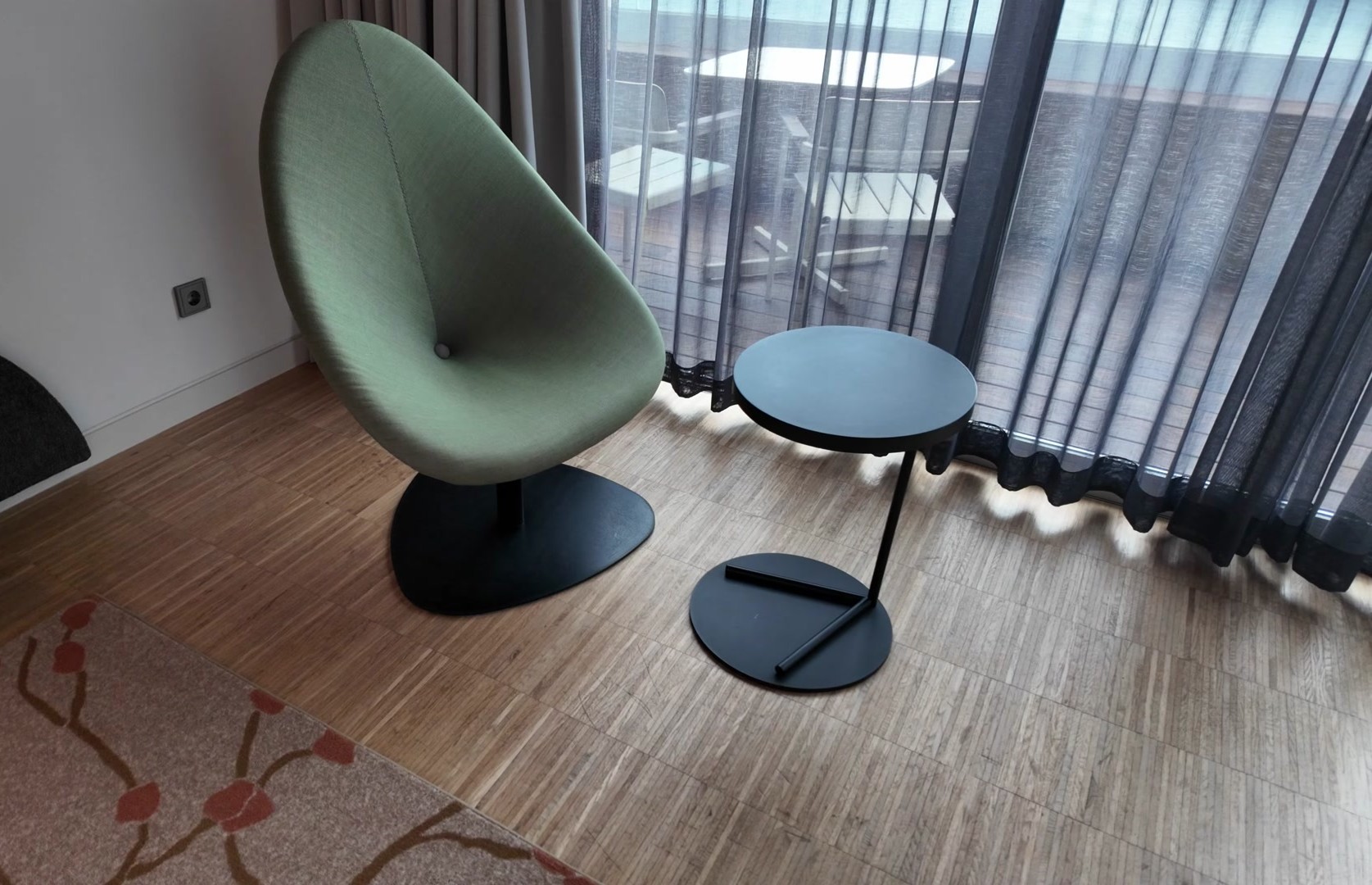
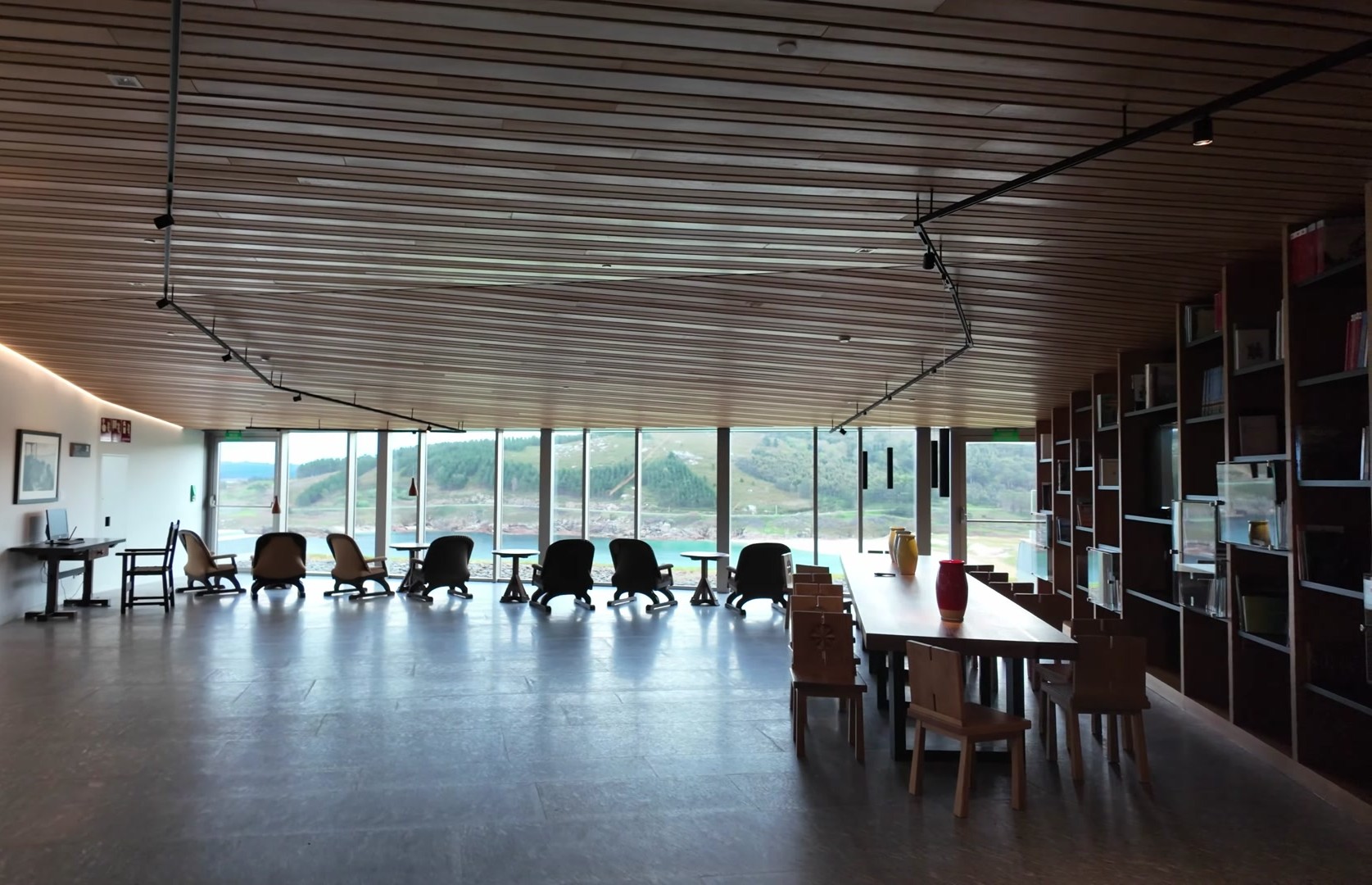
Now let me tell you a bit about the legends of this region. There’s a cave under the mountain where the hotel stands. According to legend, the melodies of the troubadour Busiran echo from there. Busiran fell in love with a rich man’s daughter. Her father didn’t approve of the love and threw Busiran into the sea. The girl, Florianda lost her mind because of this. One day, while walking in front of the cave, sea foam took the shape of Busiran and emerged, taking Florianda away. They now live together in the depths of the sea.
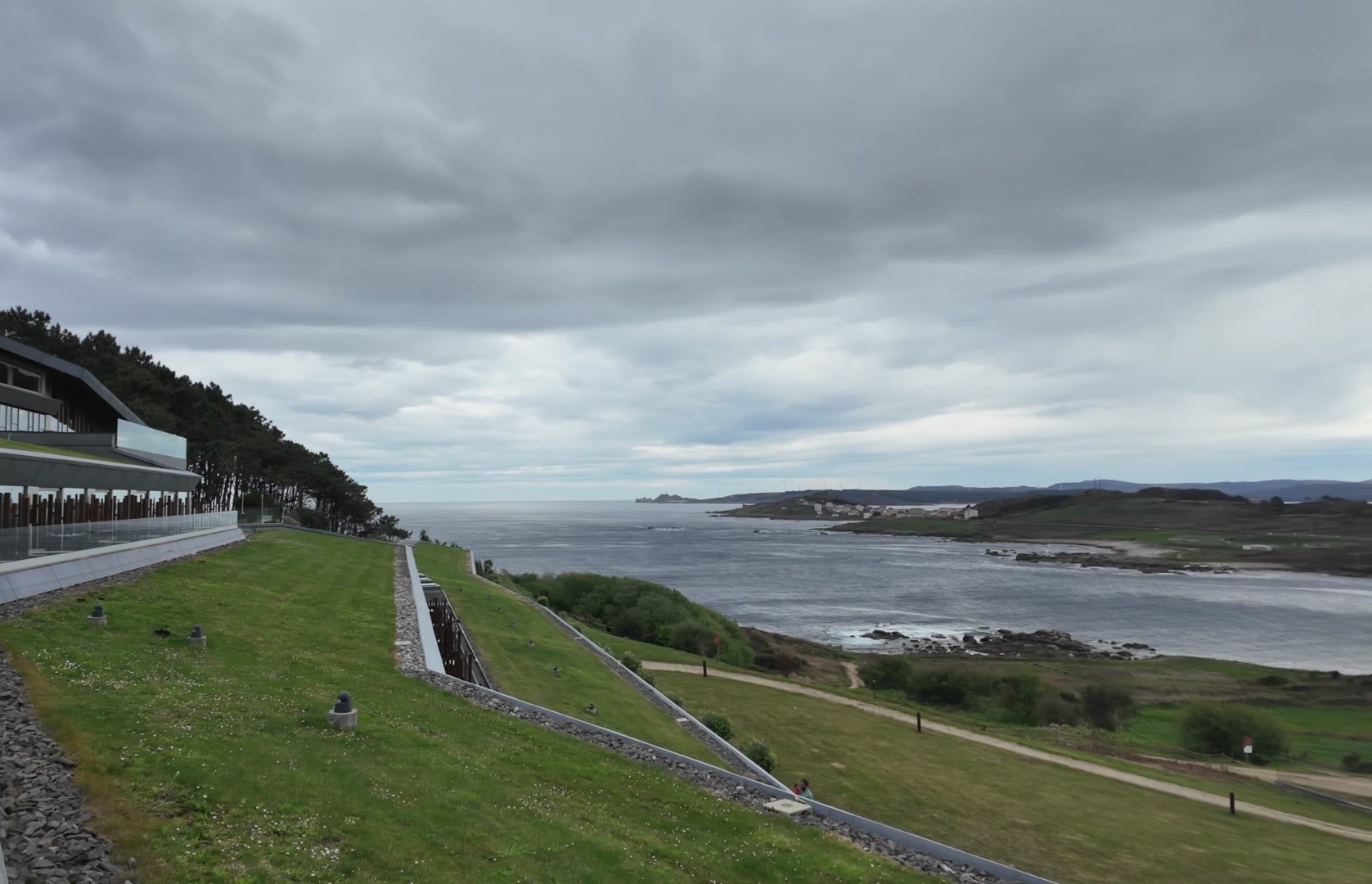



This place is located at the westernmost point of Spain. The famous Cabo da Roca in Portugal is the westernmost point of Europe. Cape St. Vincent is the southwestern point. But this place, Cabo Touriñán is the westernmost point of mainland Spain.


There’s no one here. We encountered only one vehicle and didn’t see any people. It’s very impressive. When the Romans first arrived here, they believed this was the end of the world. Many lighthouses were built here to prevent shipwrecks. There’s one at Cabo Touriñán and another one, the Cabo Vilán lighthouse, is nearby.


By the way, these lighthouses appear in some popular poster series. Some are from France, but many are from the Death Coast in Galicia.


As you know, Santiago de Compostela is the endpoint of the Way of St. James. However, pilgrims who wish to go further continue their journey to this region. That’s because a miracle happened here too. When St. James’s sermons were ignored, he was overwhelmed with sorrow. At that moment, the Virgin Mary appeared to him. She came in a stone boat and comforted him. In memory of this event, the Virgin of the Boat Sanctuary or Santuario da Virxe da Barca was built. Inside the church, there are ship models, fishing boats, sailboats, warships… It's not entirely clear why these are offered. Perhaps as a wish for protection, or maybe in memory of sunken ships.
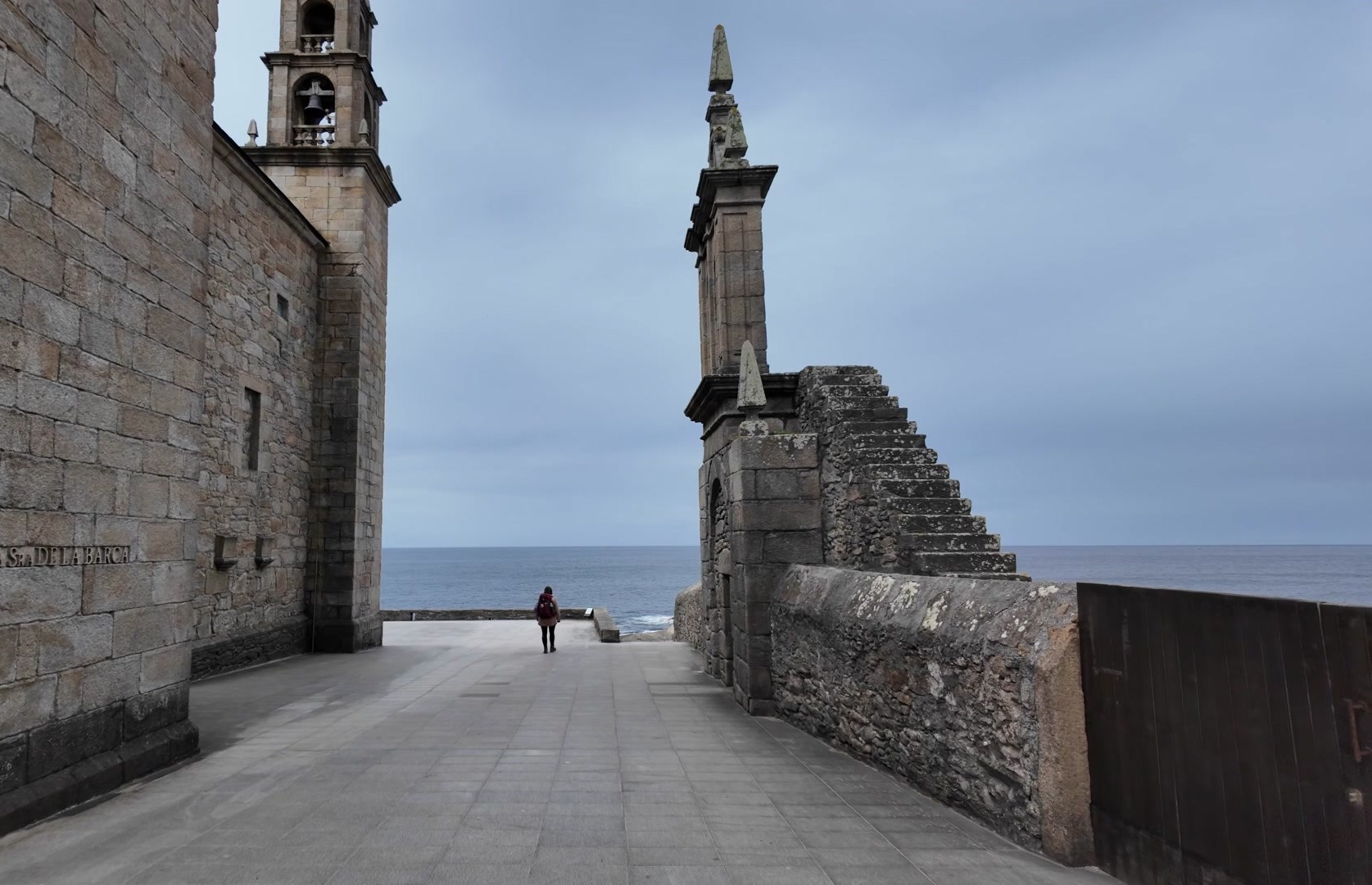


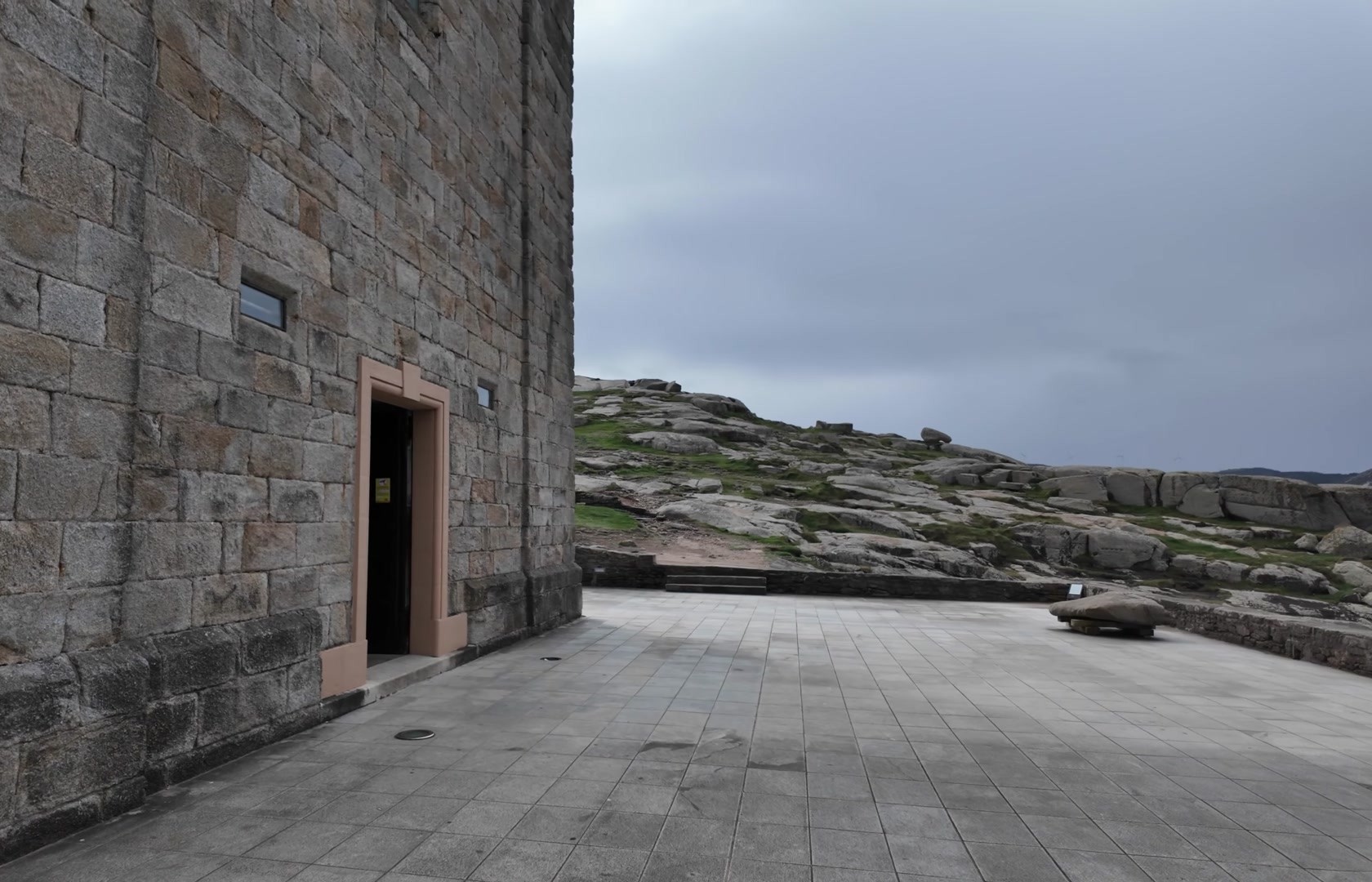
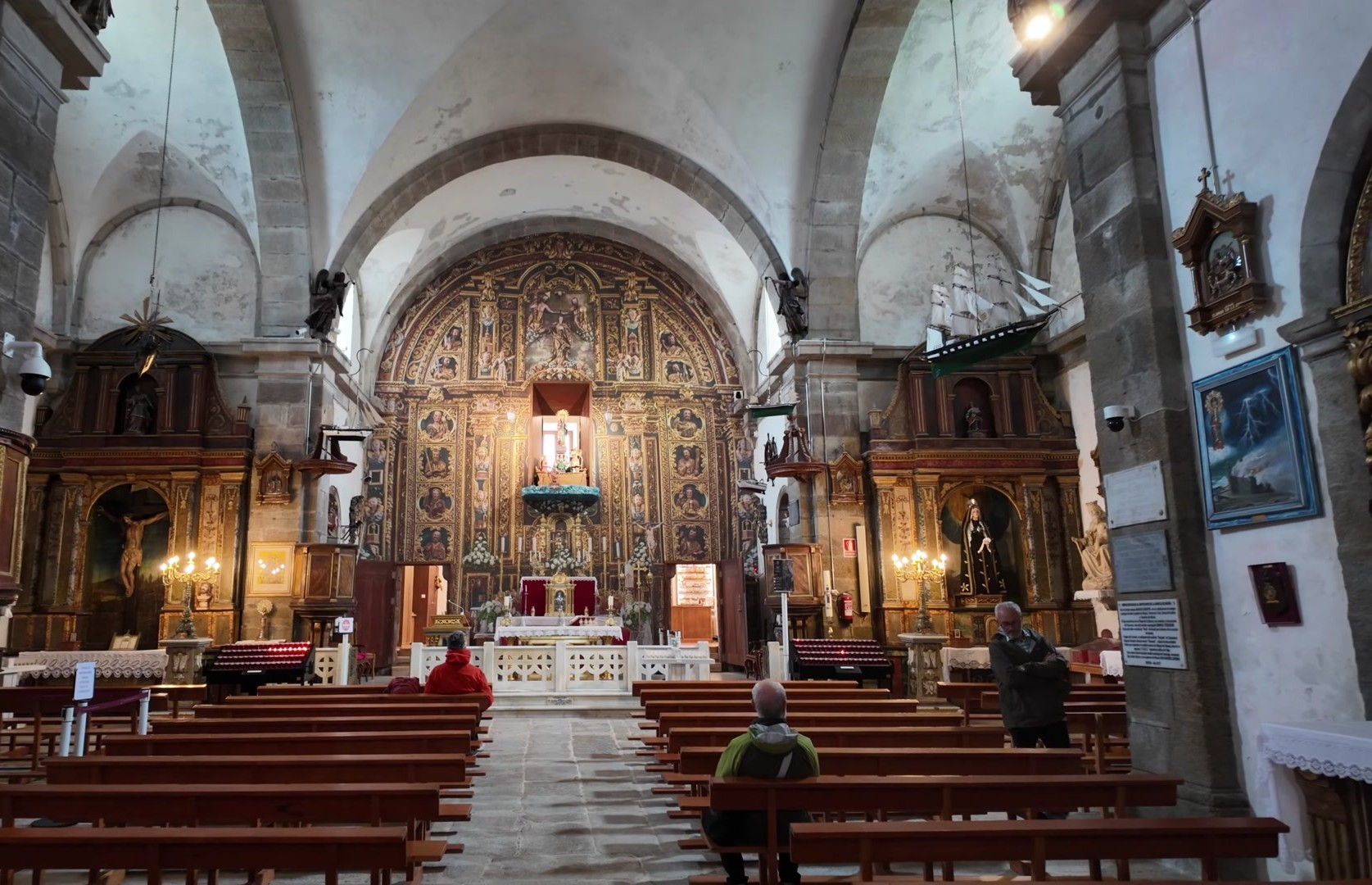


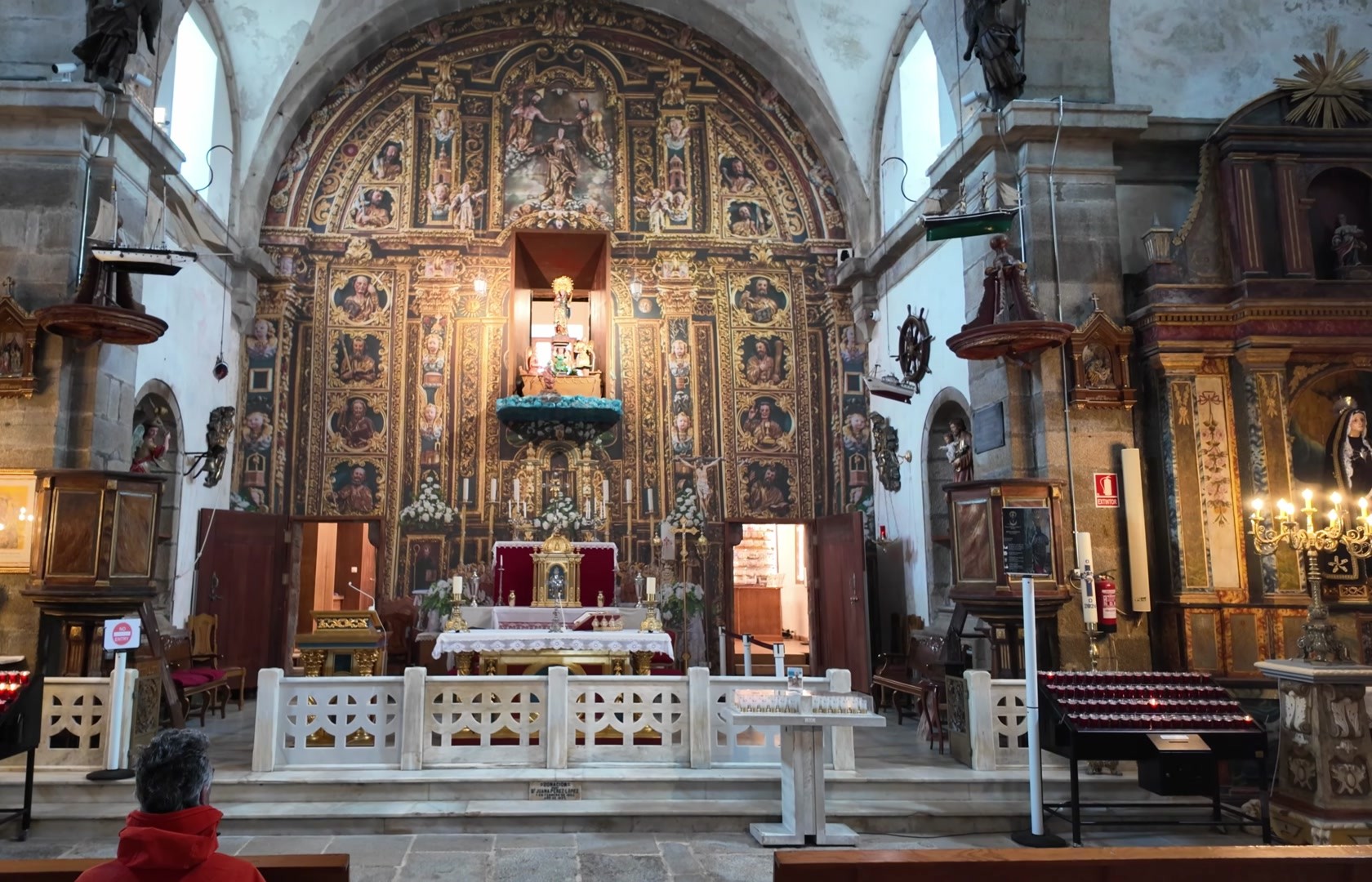

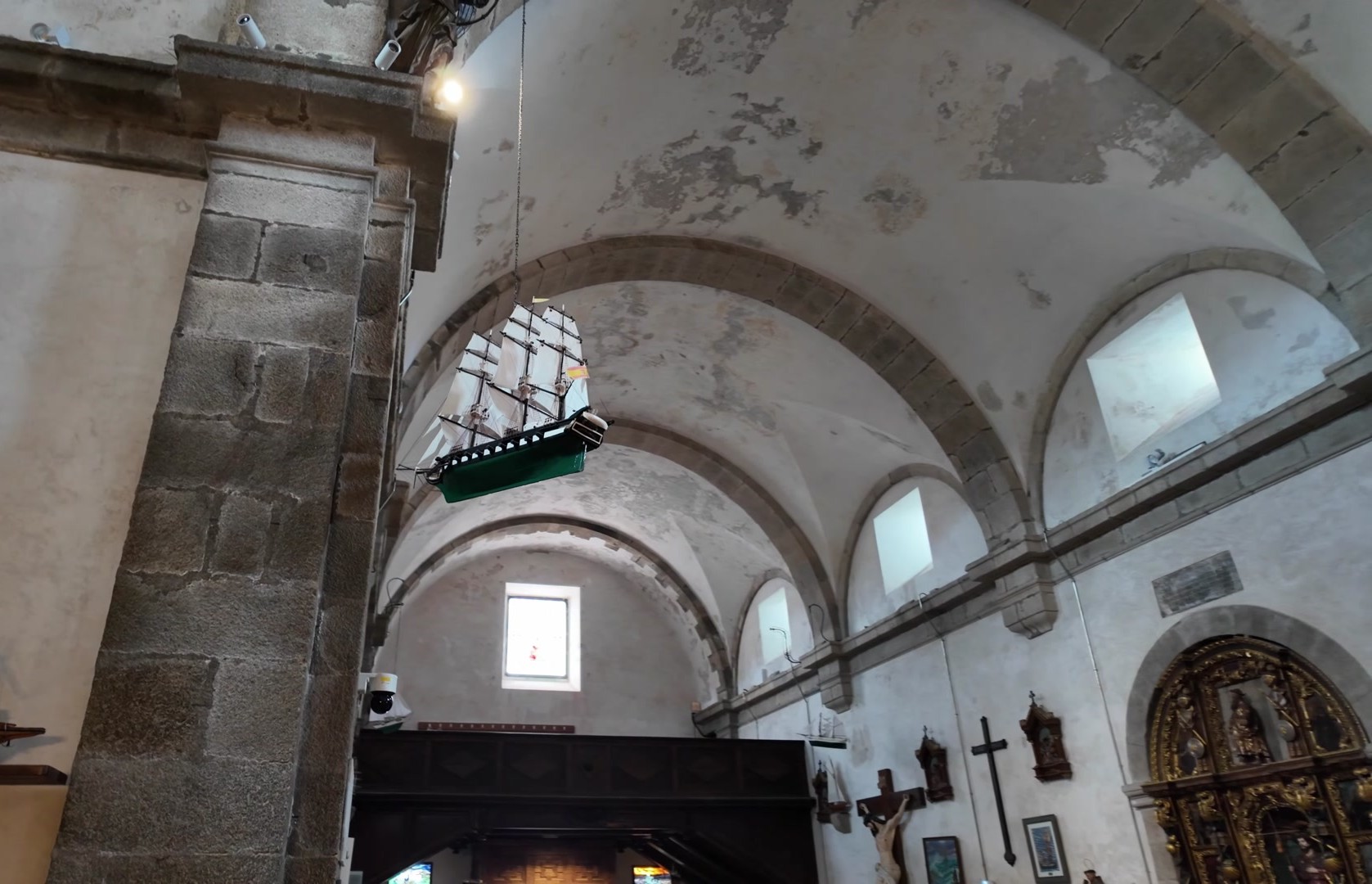
The first church was built here in the 10th century. The current structure dates from 1719. Interestingly, the Way of St. James doesn’t only end here. It can also begin here. So it’s possible to start your journey toward Santiago from this point. Maybe connecting both sacred sites gives deeper meaning.

We were going to visit Cabo Vilán, but the weather started to change. This is the Atlantic, after all. Rain was coming and the wind was strong. We had to make slight changes to our plans but still managed to see interesting things.

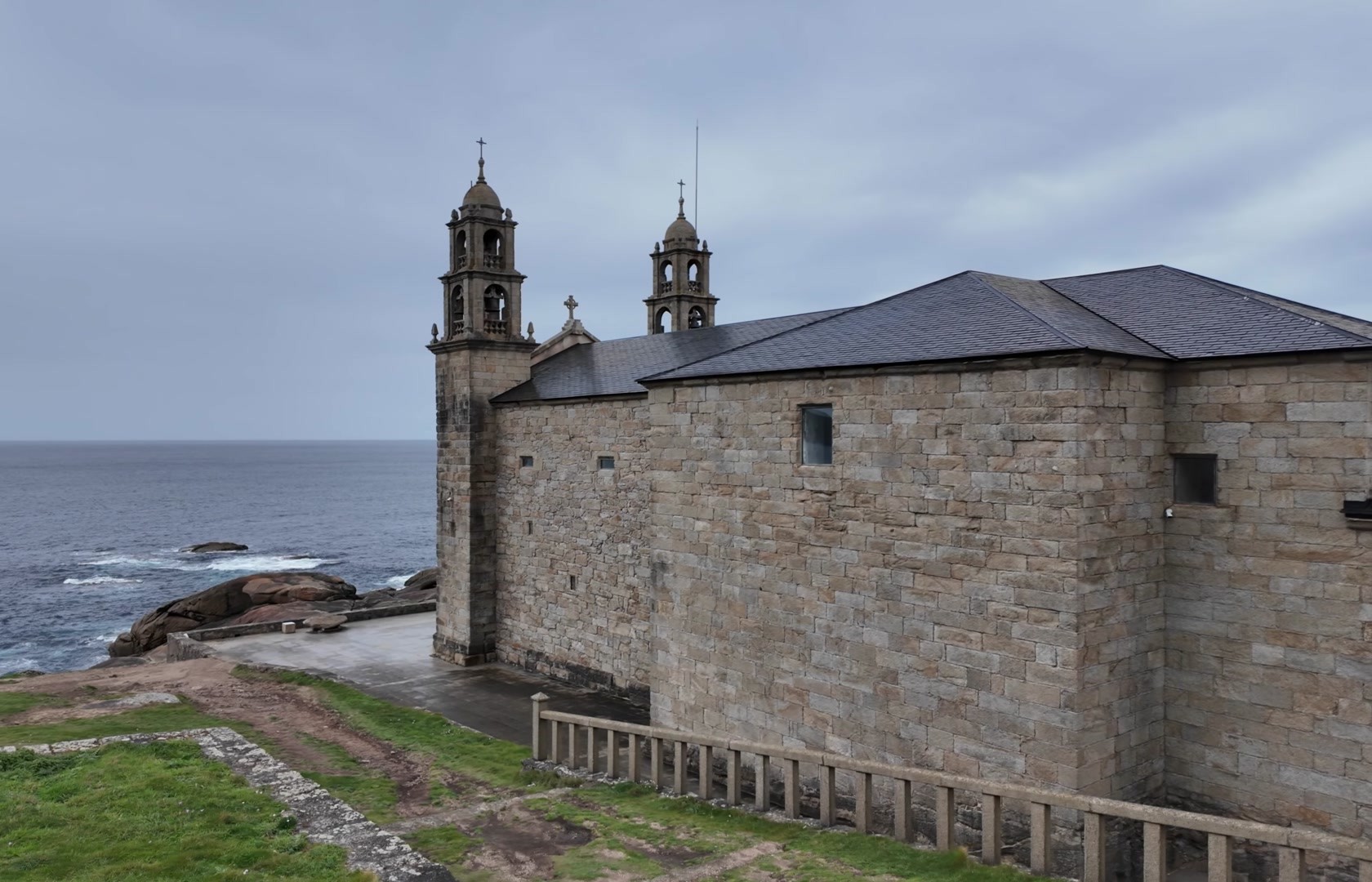
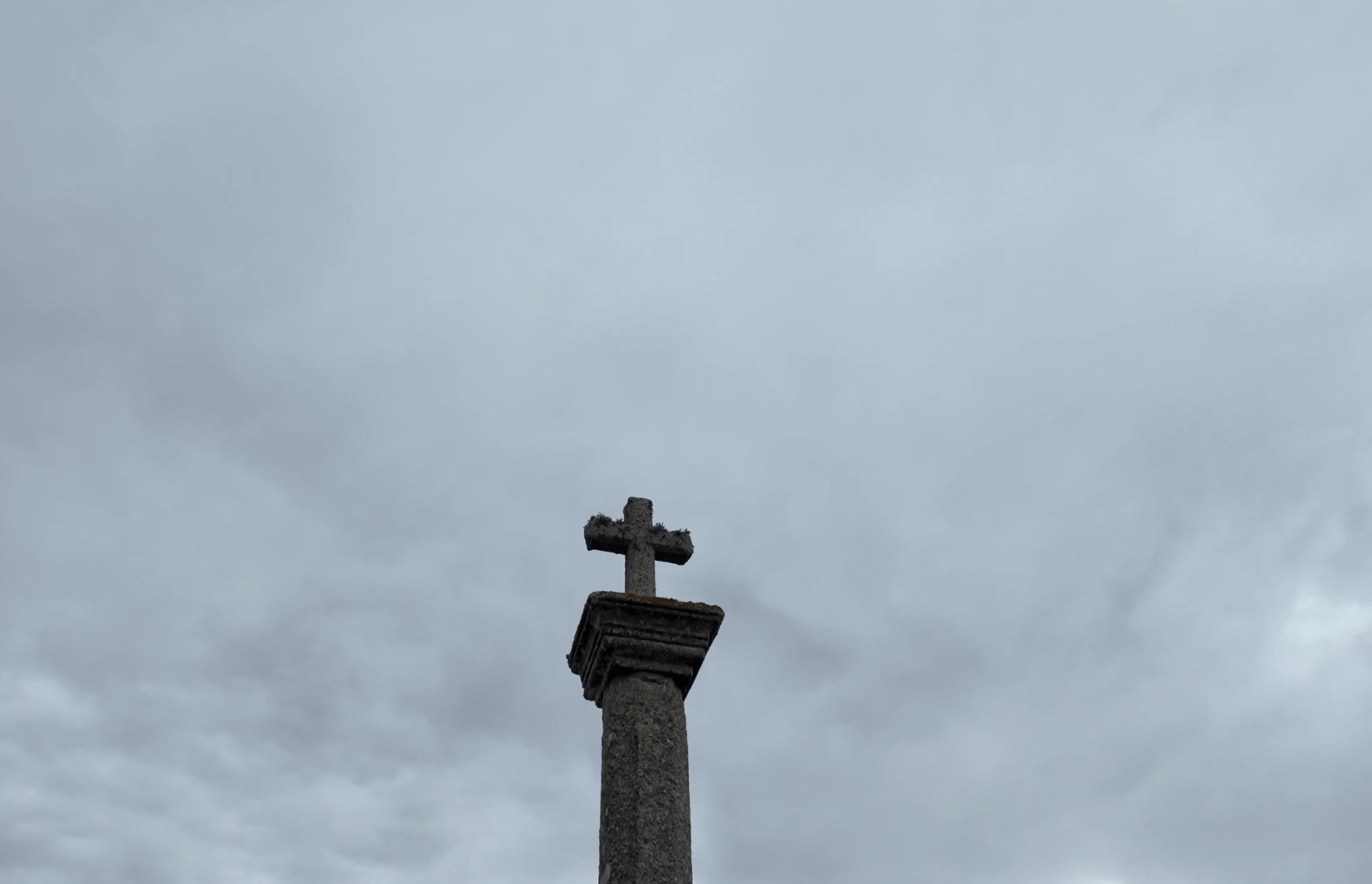

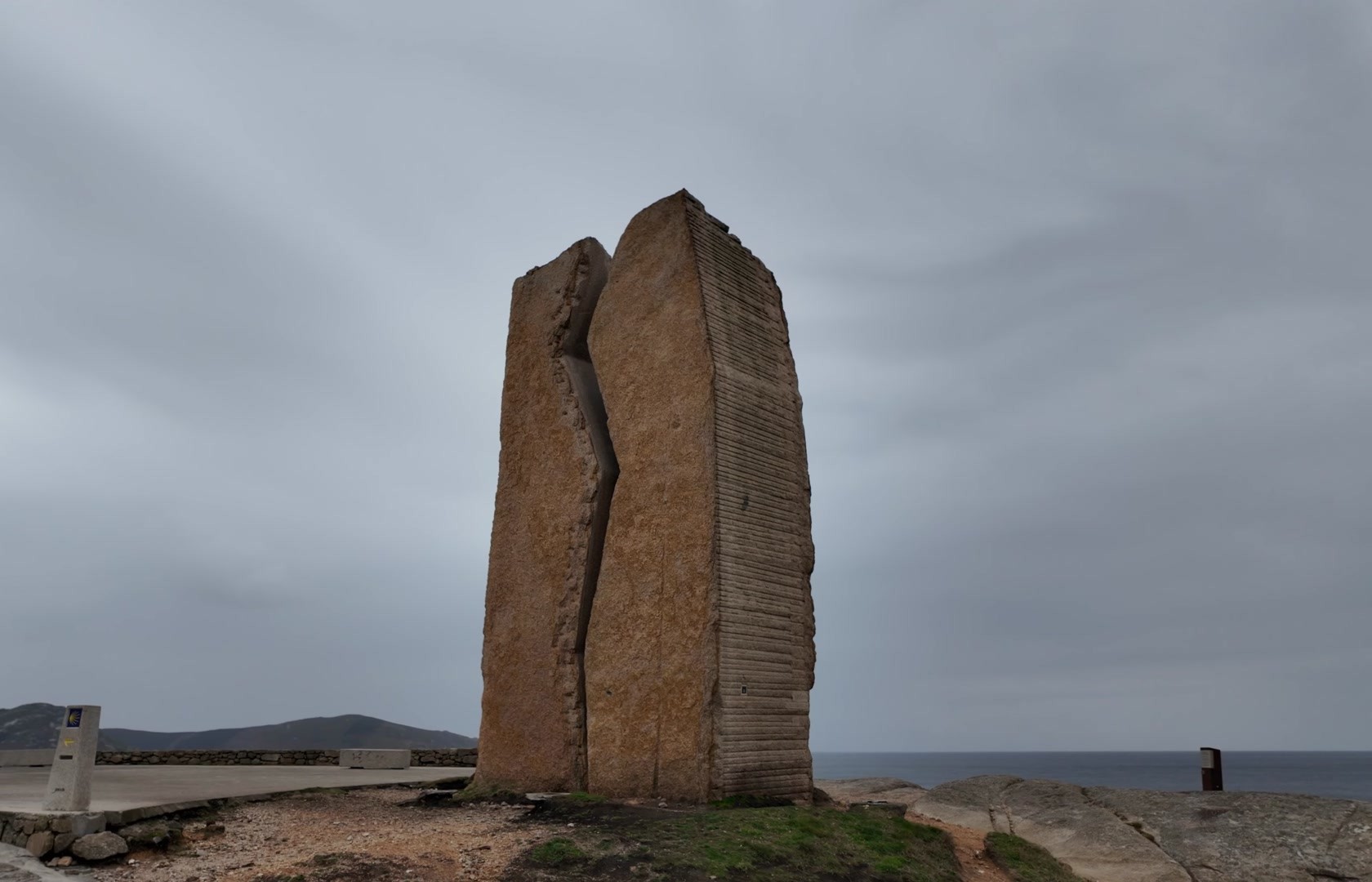
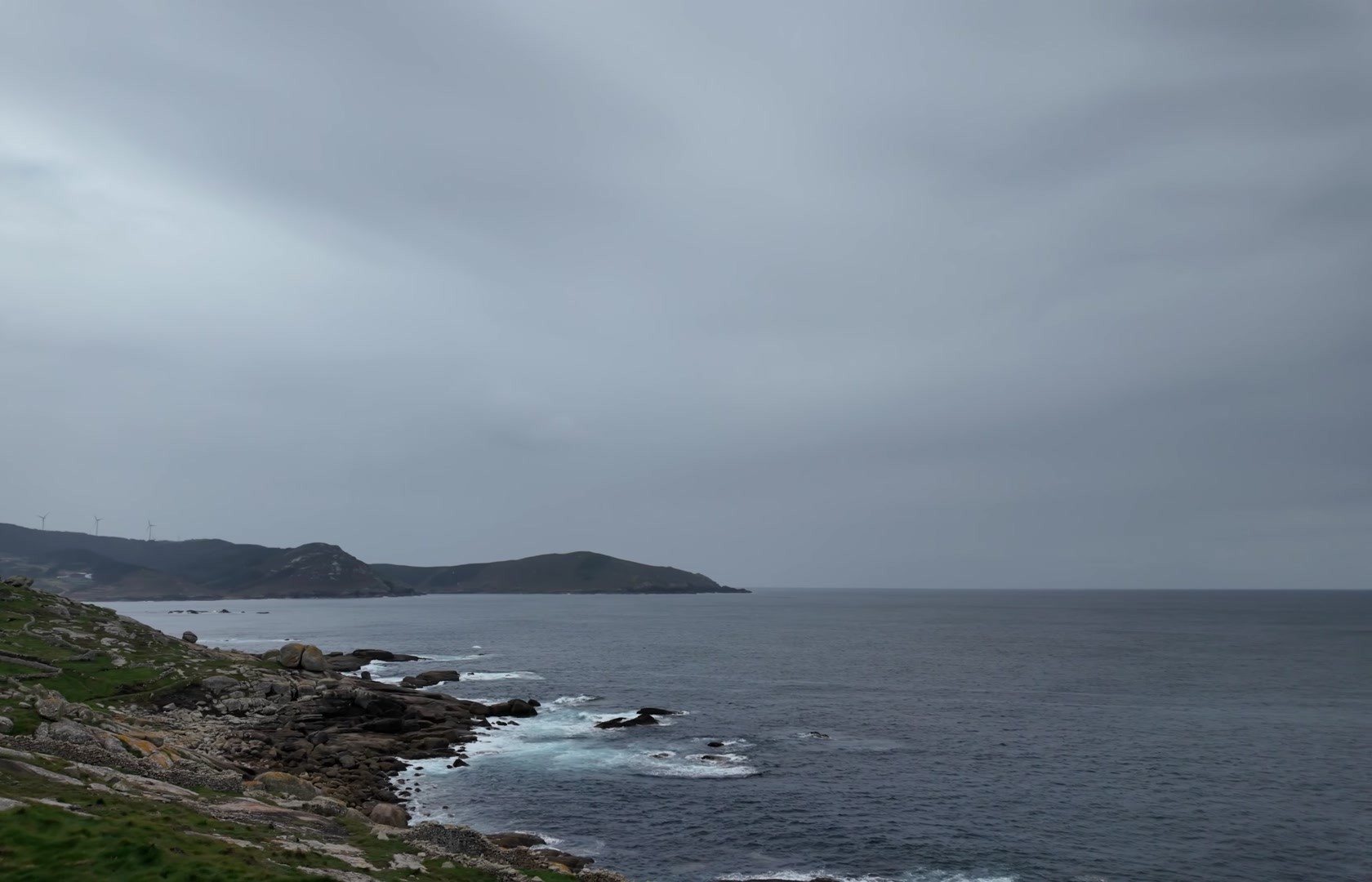
Then we arrived in the city of Lugo. This place is special because it’s the only city where the Roman-era walls are fully preserved. The walls are 2.266 meters long and completely surround the old town. It’s possible to walk along the walls, but the view isn’t striking everywhere. Below, you can see empty buildings, playgrounds, garages… But I liked the clear distinction between the old and the new city.





133.jpg (https://images.hive.blog/DQmbPAfmytZumDTxhD4XsbPZCXLrekGUkBb4RMdKx5oWpya/133.jpg)
134.jpg (https://images.hive.blog/DQmcZgNuE8LttVdWoouDr9XD8cpZc6XTwNSbiPPZHc1Wdcx/134.jpg)
146.jpg (https://images.hive.blog/DQmVW1uVX3xT7oTECsKPdiyPjSoY9PhwHtW9i9BQbBBAkdn/146.jpg)
In the old town, there are a few charming streets, the government building, city hall, a theater, an old pharmacy, a cathedral and of course, Plaza Mayor. There is some construction going on in certain areas, but a bird statue representing the city stands out. There are also small sculpture groups and modern art elements like newspaper jugglers.
163.jpg (https://images.hive.blog/DQmd1XSZrmHpgXajdF9JBQKsw3N4Bqb1k7FLeHofHqRRLkQ/163.jpg)
164.jpg (https://images.hive.blog/DQmS1bmicdpGG1zprtSqwhdU5BZvkZ4U1ssbt5AxiiGbmnH/164.jpg)
170.jpg (https://images.hive.blog/DQmVGTdh7fTxL4AFWVuWRRFTk3BFqR53QnssexZeowUYkig/170.jpg)
187.jpg (https://images.hive.blog/DQmdnWvw8t8uknRjz4g1xhSqMuRzrjxkZpUXHvEAPcpMTrS/187.jpg)
194.jpg (https://images.hive.blog/DQmcn6icG9HYQtoa8eupLTJ3G6CG9ioP12t1UQTf6RJZNw6/194.jpg)
205.jpg (https://images.hive.blog/DQmRueF6KB7mXYjFML8vZMaTtrhjXx7pwD4d28FjVGS6NLg/205.jpg)
217.jpg (https://images.hive.blog/DQmbqS2TGR6U5t4tBiQEaU1nPVfUTv28cHjm7vBHbhMSZYf/217.jpg)
The name Lugo comes from the Celtic god Lug. When the Romans arrived, the city was called Lucus Augusti. Coincidentally, my last name is also Lugo, which made visiting this place feel even more special.
219.jpg (https://images.hive.blog/DQmUHiNpmn45EqxvH3RxvFpJ79wUkLyEXfREefxvjvuq5HT/219.jpg)
268.jpg (https://images.hive.blog/DQmebY8GUpi7dHahReZVRSS1LLKKofboamjAmkz5CppR9LR/268.jpg)
277.jpg (https://images.hive.blog/DQmUoiN6GJVbrBWmCYwefiXVc8vaSF8y8fjVn6xdtr1y4hK/277.jpg)
290.jpg (https://images.hive.blog/DQmZm7t9SnfNqDhCmVGzzGkSivwyxqQLy8hZ68RuXtdYma2/290.jpg)
302.jpg (https://images.hive.blog/DQmQkU1mRnbFjDi9MQAPWNiaX7d5f3kWrnsB55MjmrCZJpi/302.jpg)
336.jpg (https://images.hive.blog/DQmP6a4vupCKZSbSViXiQTa4zXiymFZUPusJZ7mrSv58RJn/336.jpg)
345.jpg (https://images.hive.blog/DQmY1jSGywC1j5yncBRQkeJr97fbvM5QraZF3hJ73b1ko6G/345.jpg)
353.jpg (https://images.hive.blog/DQmdtYSb6KD24w3VNgKYsdY9NoAVS3aowfXWfAriEfu6VxH/353.jpg)
358.jpg (https://images.hive.blog/DQma5atU74cfsKLKs61AjR2LrAKWap7VeYeneH7ULezRTqv/358.jpg)
380.jpg (https://images.hive.blog/DQmP6z7XbTV7wGYPUkiPQ6X4rJEypS8vhM14RvkxTLBiAQ9/380.jpg)
384.jpg (https://images.hive.blog/DQmaJmcrtnbD8hZAp7tkoqYQw8nCX7Wa7vt9Mw4nsXcpAoB/384.jpg)
394.jpg (https://images.hive.blog/DQmcXn8TrF7Lh3t2d5yaT2c3r5v2AohGgtUBjnes6dS8jqo/394.jpg)
It was time to eat. For lunch in Lugo, I picked a place listed in the Michelin Guide: a small restaurant called Paprika. It’s not obvious from the outside, but once you enter, you’re surrounded by a bright and art-filled atmosphere. The furniture is eclectic, but the focus is the kitchen.
440.jpg (https://images.hive.blog/DQmfATdCpK5y6Qf5bRHna7dXUqbAEpN8kkEcaHjcevBGbJY/440.jpg)
The five-course seasonal menu included tuna tataki, marinated cod and seafood croquettes. Then came chicken cannelloni with demi-glace sauce, followed by a light dessert of pear sorbet with cheese foam, served with a wine called "Ugly Duckling" from Ribeira Sacra.
471.jpg (https://images.hive.blog/DQmU2drgrUda8B3p9WbF5fJVJx87h3raRGvExXYWYJiRx6c/471.jpg)
267.jpg (https://images.hive.blog/DQmRqBYKd5Vi6arLjjpXABGYNoRU4tE7uQ4ncdKQ7VUN4Jd/267.jpg)
312.jpg (https://images.hive.blog/DQmbY3C8EcAroM57RsCCwEF3aS3efF77eyctXGgRseQZQM8/312.jpg)
329.jpg (https://images.hive.blog/DQmZHiFJockofSsMvTt1JomEvMZ4e5sN7eLsAFDFAtpv4P4/329.jpg)
After that, we headed to Ribeira Sacra. That was a big discovery for me as well. I’ll share more about it in my upcoming posts.